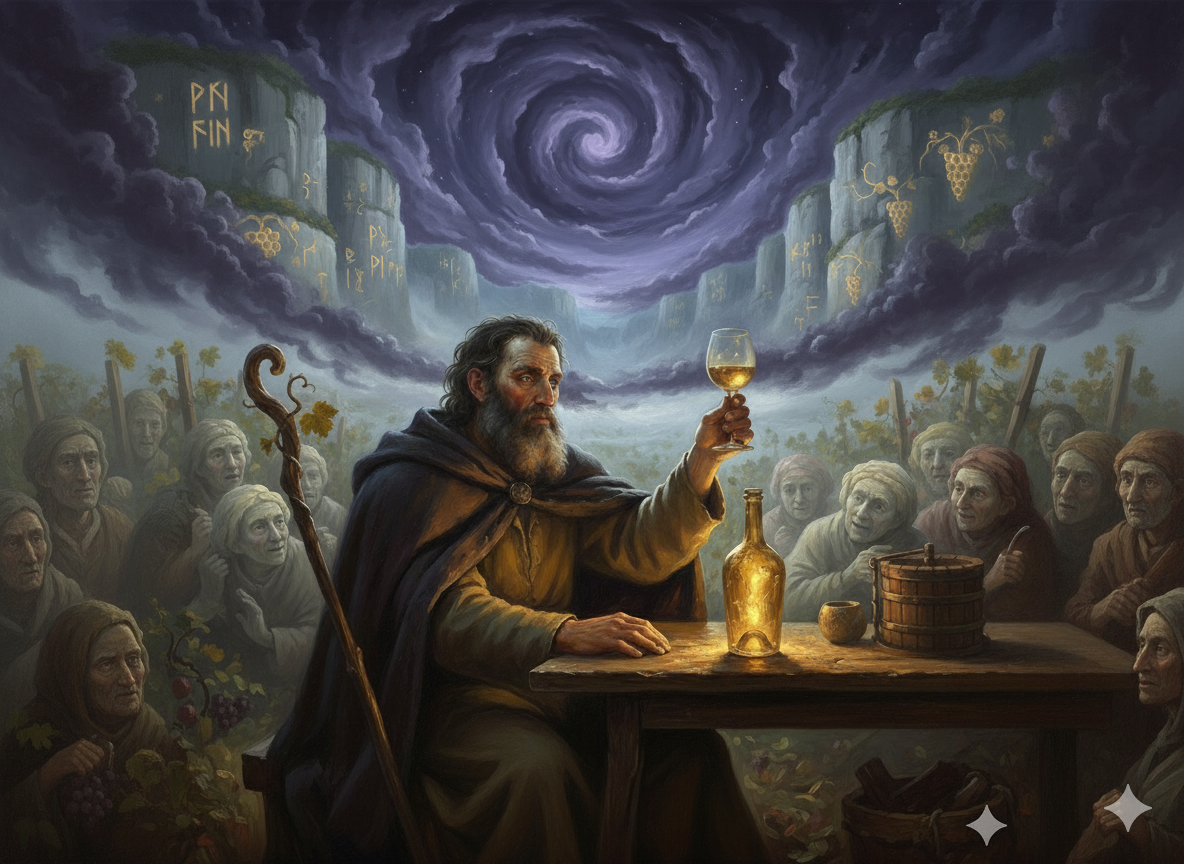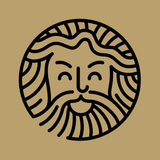Domaine Ganevat Vignes de Mon Père 2017: The Hidden Hymn of the Jura

When Bacchus walked the foggy cliffs of Jura and carved a wine only the bold would treasure
A Forgotten Bacchic Tale
There is a story the poets never told. When I crossed the Rhône and climbed into the Jura, the villagers guarded their barrels as if they were relics. They feared me, the god of frenzy and festival, would not understand their patient alchemy - the way Savagnin could slumber in wood for years, absorbing silence and stone.
So I cloaked myself as a weary pilgrim. They poured me a glass of their oxidative white. It tasted of chalk dissolving in rain, walnuts locked in stone jars, and sunlight remembered after winter. I laughed and told them: “This wine will outlast kings, but only those who listen will recognize its worth.”
That spirit still lives in Domaine Ganevat’s Vignes de Mon Père 2017, a bottle that feels less like a product and more like a secret being passed between generations.
The Wine: Jura’s Sacred Relic
Jean-François Ganevat, the Jura’s alchemist and cult hero of the natural wine movement, crafted this Savagnin as if chiseling scripture. The 2017 vintage was kind to him - balanced ripeness, steady growing conditions, and enough structure to carry this wine twenty-five years. The drinking window begins now, but its peak will come between 2025 and 2035, when its oxidative depth and saline grip will reveal their fullest voice. Production was vanishingly small, only about 500 cases, which makes each bottle a relic of its own.
Market Reality: Treasure Without a Map
From an investment perspective, scarcity is both its greatest strength and its sharpest risk. On the market today, bottles fetch between $721 and $772. Unlike Bordeaux first growths or Burgundy grands crus, Ganevat’s wines are not tracked on the Liv-ex exchange, which means no institutional liquidity and no price graph to lean on. Auction appearances are rare, and when they do emerge - often in boutique European houses - they are snatched quickly by collectors or Michelin-starred restaurants.
Projections suggest modest but steady appreciation. A conservative forecast might place it around $950 to $1,080 by 2032. A moderate scenario brings it into the $1,160 to $1,320 range. Optimists whisper about $1,500 or more, but unlike Lafite or Rousseau, this is not a ship that sails with the winds of the global market. It is a vessel adrift in narrower waters, moved by cult devotion rather than institutional demand.
Risks: The Fog Around the Treasure
Risks are clear, and they echo the wine’s very identity. Liquidity is thin; selling requires patience and the right buyer. Its oxidative style is polarizing - worshiped by sommeliers and natural wine devotees, dismissed by those who expect polish and uniformity. Volatility follows fashion, and natural wine, like all movements, rises and dips in popularity. The wine itself is fragile, with minimal sulfur, so provenance and storage matter more than for sturdier peers.
Portfolio Fit: A Pilgrim’s Thread
For those building serious portfolios, there is a place for Ganevat. Not as a cornerstone, but as a narrative thread. A few bottles - no more than two to six - offer diversification across geography and style. Jura brings a new voice to a collection dominated by Bordeaux, Burgundy, Champagne, and Napa. Savagnin adds a grape variety few investors ever see. And oxidative winemaking, so rare in investment cellars, gives a portfolio texture.
Verdict: Not Empire, But Legend
The verdict is simple: this is not empire, it is legend. Vignes de Mon Père 2017 will not roar on Liv-ex charts, nor anchor financial dynasties. But it will whisper in your cellar, waiting for the day you uncork it and remember that not all treasures are minted in gold. Some are carved in limestone and silence, meant for those who walk with patience and believe in the hidden hymn of the Jura.





